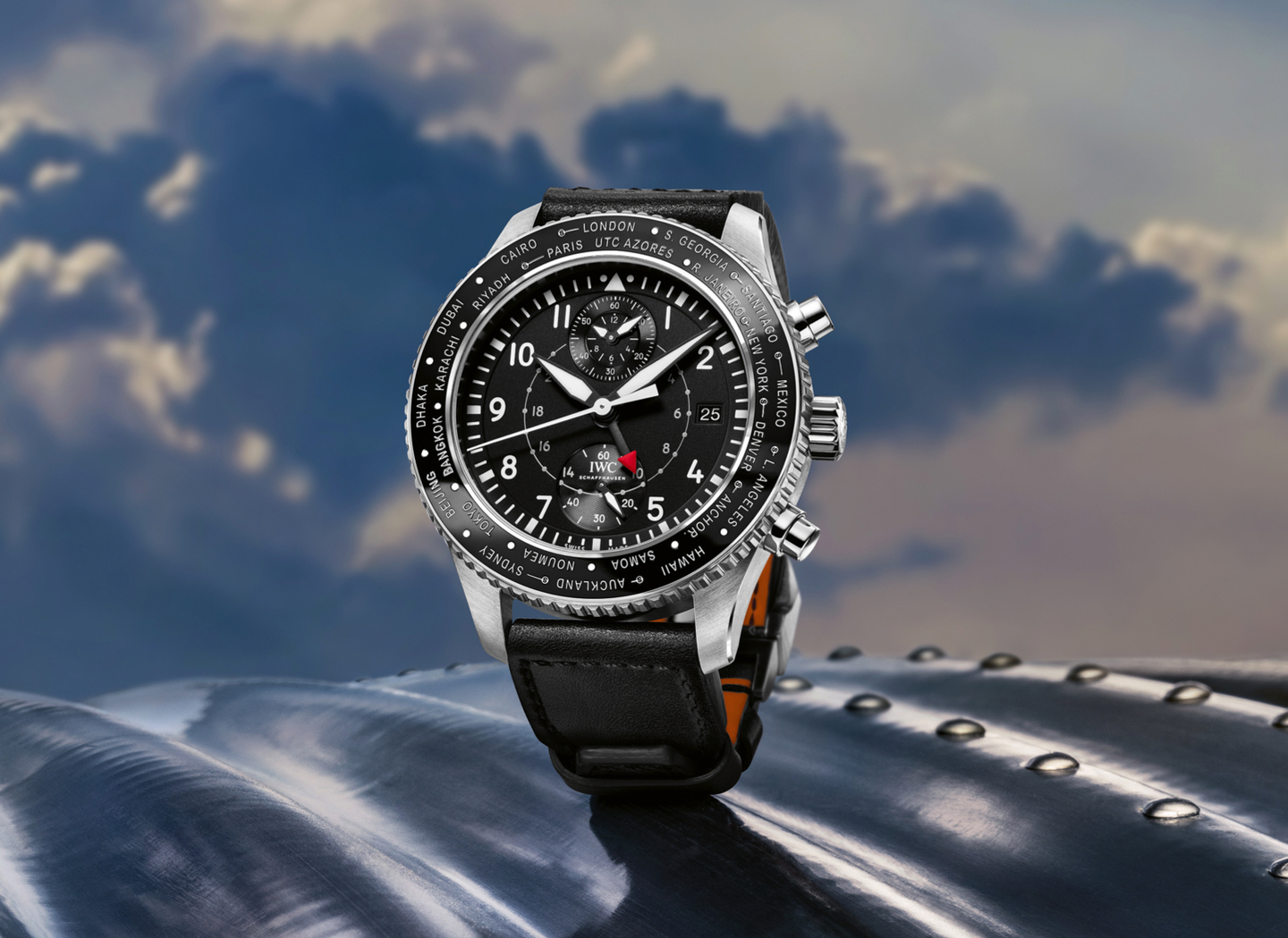When IWC purchased the rights to watchmaker Vogard’s intellectual property in November 2014 – production of a watch utilizing the newly acquired world time bezel patent was all but guaranteed. We even speculated, at the time, that the watchmakers in Schaffhausen might somehow use their own Aquatimer dive bezel technology in combination with the patent technology from Vogard.
Fast forward to 2016 and IWC did just that – by combining their own dive bezel design with the Vogard world timer design. The result is a timepiece that allows you to change the timezone by merely pressing down on the bezel and rotating to your desired city (24 world time zones). This is an improvement over the Vogard world time zone bezel, which requires the extra step of having to a release a large lever before making time zone adjustments.

Further enhancing the ease of use is a 24-hour hand and inner chapter ring to indicate day or night. The oversized red tipped arrow-shaped hand is synchronized correctly with the time zone, regardless of whether time zone is advanced or turned back, and even if the 24-hour hand passes midnight. The date also stays perfectly synced with the current time.
In addition to the superlative time zone complication, there is also a chronograph with hours and minutes in a single subdial at 12 o’clock, chronograph seconds displayed in the center including a complicated flyback function (which allows you to instantly restart the hand without stopping and resetting as you would on a traditional chronograph).
The hours and minutes are indicated via large propeller-shaped hands that are treated with a luminous material, and white hour and minute markers. There is also a continuous seconds display at 6 o’clock.
The 45 mm x 16.5 mm case is stainless steel case, with a black dial and polished black bezel with white engraved city names (marked with the letter “S” next to the cities that observe “DST” or “summertime”). The inscription “UTC” below “London” shows the current Universal Time Coordinated. The dial is protected by a convex sapphire crystal that is secured against displacement by drops in air pressure thanks to a special back engraving.

IWC caliber 89760 is automatically wound and oscillates at a frequency of 4Hz, with a maximum power reserve of 68-hours, and 39 jewels. Water-resistance is 60 meters.
In addition to the bezel adjustable time zone patent that was acquired from Vogard, the external/internal rotating bezel design used in the IWC Aquatimer watch line, provided IWC’s engineers with a way to connect the bezel with the gear train inside the watch. Rotating the city ring advances or turns back the white hour hand in one-hour steps and shows the time in the desired time zone. At the same time, the black-and-red 24-hour hand on the inner 24-hour ring shows whether it is night or day.
The sprung rotating bezel concept that was first used for the Porsche Design Ocean 2000 in the 1980s ensures that the bezel rotates only when pushed down and is thus protected against inadvertent rotation. Pressure must be exerted on two opposite sides, and only then can the lock be released smoothly and the bezel turn in both directions. When the ring is released, a spring ensures that it returns to its original position. This mechanism is an extremely effective means of ensuring that the time zone is not moved inadvertently. The detents on the rotating bezel ensure that it locks into precisely the desired position, or into the “S” necessary for showing summer time.
 Vogard Timezoner from at Baselworld 2009
Vogard Timezoner from at Baselworld 2009
Finally, the rotating bezel has a small “S” to indicate the names of cities that recognize summer time, such as London and New York, and IWC Schaffhausen has been given a patent for this particular function.
The IWC Pilot’s Timezoner Chronograph is paired with a thick black calfskin strap by Santoni, with a signature orange underside, and a stainless steel folding clasp. Engraved on the back of the stainless steel case, which is water-resistant to 60 meters, is a depiction of a Junkers Ju 52 aircraft, a very common passenger plane from the 1930s.
Ultimately, no less than 4 patents were utilized to produce this watch. The result, in my opinion, is one of the easiest to use world timer watches on the market. (Ref. IW395001)
